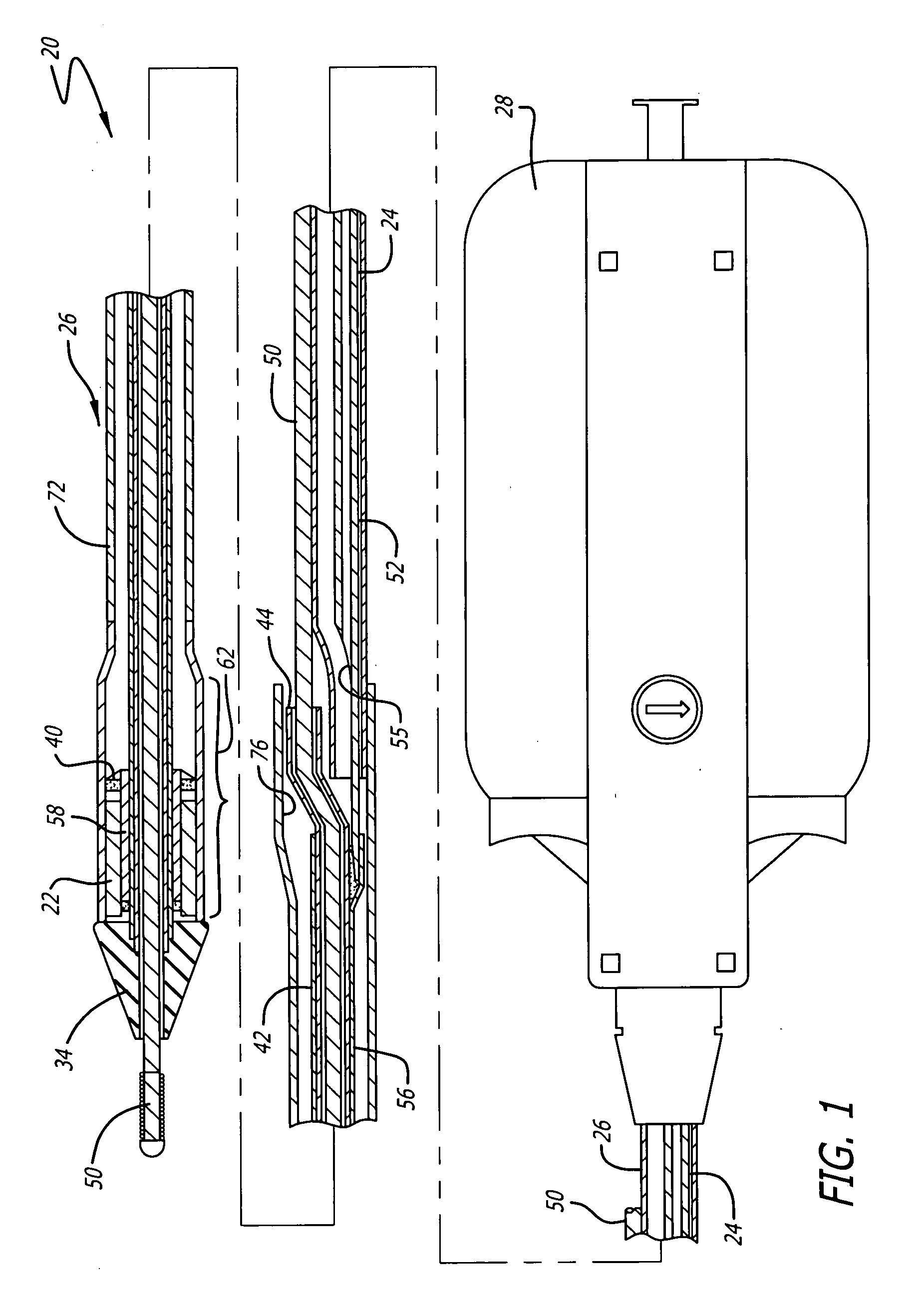Rapid-exchange delivery systems for self-expanding stents
a technology of stents and stents, applied in the field of stent delivery systems, can solve the problems of reducing the overall flexibility of the delivery system, the problem of rotational alignment between the sheaths, and the addition of retractable sheaths, so as to reduce the profile of the stent delivery system, the effect of reducing the wall thickness
- Summary
- Abstract
- Description
- Claims
- Application Information
AI Technical Summary
Benefits of technology
Problems solved by technology
Method used
Image
Examples
Embodiment Construction
[0038] The present invention relates to rapid-exchange delivery catheter systems in which a stent is delivered intraluminally into a human patient's body lumen, such as a coronary artery, carotid artery, renal artery, peripheral artery and veins, and the like, and implanted therein.
[0039] There are numerous prior art stent delivery systems which may be used in conjunction with the present invention. The stent delivery systems suitable for use with the present invention are “rapid-exchange” delivery systems which have an outer sheath adapted to slide over an inner catheter so as to cover a stent. The invention described in detail herein is described in the context of an elastically self-expanding stent delivery system. However, the invention is not limited to such use, and may equally be used with a delivery system for a balloon expanded stent or heat-expanded stent.
[0040] In one embodiment of the invention, as exemplified in FIG. 1, a rapid-exchange catheter assembly 20 is provide...
PUM
| Property | Measurement | Unit |
|---|---|---|
| movement | aaaaa | aaaaa |
| flexible | aaaaa | aaaaa |
| plastic deformation | aaaaa | aaaaa |
Abstract
Description
Claims
Application Information
 Login to View More
Login to View More - R&D
- Intellectual Property
- Life Sciences
- Materials
- Tech Scout
- Unparalleled Data Quality
- Higher Quality Content
- 60% Fewer Hallucinations
Browse by: Latest US Patents, China's latest patents, Technical Efficacy Thesaurus, Application Domain, Technology Topic, Popular Technical Reports.
© 2025 PatSnap. All rights reserved.Legal|Privacy policy|Modern Slavery Act Transparency Statement|Sitemap|About US| Contact US: help@patsnap.com



